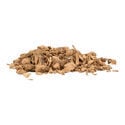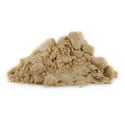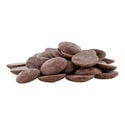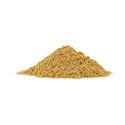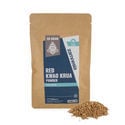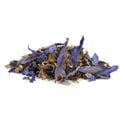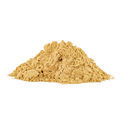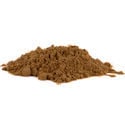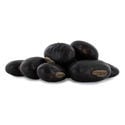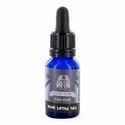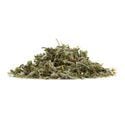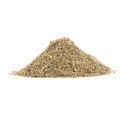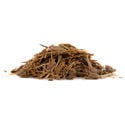Damiana: Everything You Need To Know
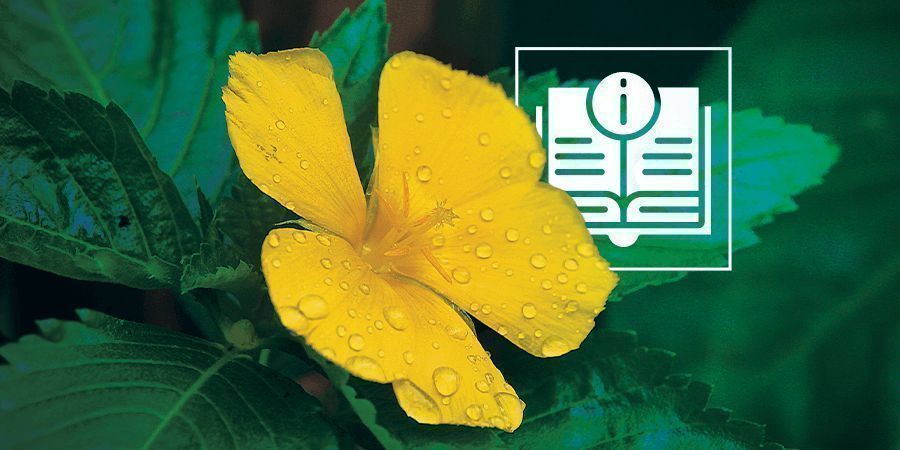
Contents:
What is Damiana?
In Mexico, Damiana has been used as an aphrodisiac and sexual tonic for centuries. Some believe that a copious amount of Damiana was the secret ingredient in the original recipe of the infamous margarita drink. And indeed, to this day margarita in Mexico is often made with Damiana, which infuses the drink with a unique floral twist - plus, it gets the mojo going.
Back when the spanish missionaries set foot on Mexico, they already observed that native tribes would mix a Damiana tea with sugar for its sexually stimulating effects. In the meantime, the early uses of the plant as an aphrodisiac have been validated in modern laboratories; testing on animals has shown increased sexual performance in both female and male specimen. Male rats with sexual disfunction reacted particularly well to the herb, although both sexes exhibited increased sexual activity.
In modern herbalism and phytotherapy, Damiana is still widely used as a sexual tonic and aphrodisiac. Damiana has been described as a mild mood lifter by itself, but that action can be further enhanced through combination with other antidepressant herbs.
Damiana (Turnera diffusa) is a small shrub belonging to the Passifloraceae family of plants. It can be found growing native in the South-western parts of Texas in the US, as well the Caribbean, and parts of Central and South America. Damiana is a relatively small shrub that grows to about 1-2 meters in height, and produces small yellow flowers that bloom into small, sweet smelling fruit. The leaves are the pharmacologically active part of the plant. They tend to be 10-25 cm long, have a serrated edge, and have an extremely aromatic smell.
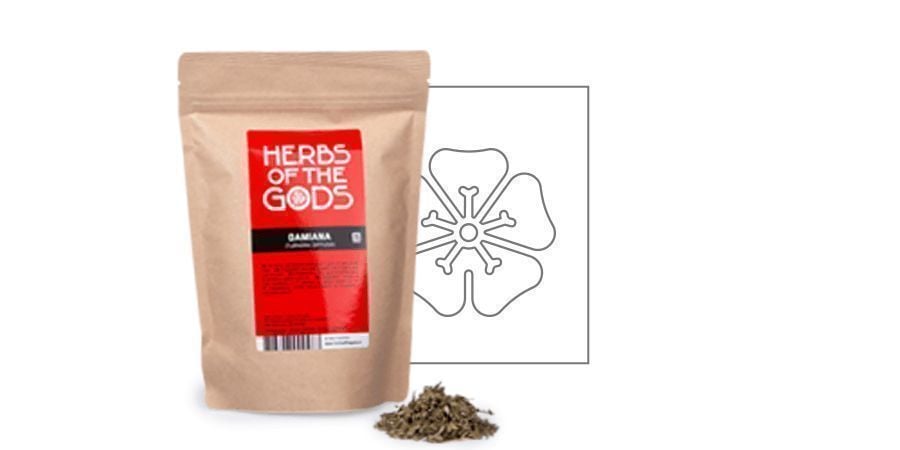
What Are The Effects Of Damiana?

Damiana has been used for centuries primarily as an aphrodisiac and sexual tonic. It has been shown to substantially increase the libido in both sexes alike, which is one reason the herb is widely used in Mexico to create a stimulating Damiana margarita drink.
One of the ways Damiana is though to increase sexual potency is by increase the amount of oxygen in the blood. A better oxygen supply benefits the body overall and quickly increases the mood and sexual potency. Studies on rats have shown very positive results, dramatically improving their sexual performance. However, studies on humans have not been conducted, as with many other herbs.
The History Of Damiana

Damiana use dates back many centuries. When the spanish missionaries arrived in present day Mexico, they already observed the native tribes drinking Damiana tea.
But most likely its use dates back even further; there are records of it being used by the Mayans as an aphrodisiac as well as to treat “giddiness and loss of balance”. It was also used by the Aztecs as a tonic that was believed to improve general health and wellbeing.
In the 1870’s Damiana began to spread as a commercial product. It was imported into the USA where it was sold as part of tonics, elixirs and tinctures. Already then it was mainly used as an aphrodisiac that would improve sexual ability, especially in the old and enfeebled.
In 1888 Damiana was added to the first edition of the American “National Formulary” as both an elixir and a liquid extract, but never proved itself enough to be entered into the pharmacopeia. Due to this failure, it was dropped from the National Formulary in 1916, but the liquid extract from its leaves was kept in until 1947.
Knowledge about Damiana was slowly fading away, until it was rediscovered in the 1960s by ethnobotanists and hippies alike. Along with many other herbs, Damiana has since found a permanent place in the medicine closet of herbalists and phytotherapists..
- (n.d.). - https://www.endocrineweb.com
- Azhar Rasul, Faya Martin Millimouno, Wafa Ali Eltayb, Muhammad Ali, Jiang Li, & Xiaomeng Li. (2013). Pinocembrin: A Novel Natural Compound with Versatile Pharmacological and Biological Activities - https://www.ncbi.nlm.nih.gov
- Edgar Romualdo EG, Lilia AM, Rafael SG, & Alfredo SM. (2018 Dec). Antioxidant effects of damiana (Turnera diffusa Willd. ex Schult.) in kidney mitochondria from streptozotocin-diabetic rats - https://www.ncbi.nlm.nih.gov
- Sabna Kotta, Shahid H. Ansari, & Javed Ali. (Jan-Jun 2013). Exploring scientifically proven herbal aphrodisiacs - https://www.ncbi.nlm.nih.gov
- Zhao J, Dasmahapatra AK, Khan SI, & Khan IA. (12/08/2008). Anti-aromatase activity of the constituents from damiana (Turnera diffusa) - https://www.ncbi.nlm.nih.gov
Aphrodisiacs
you might also like




 Seedshop
Seedshop Headshop
Headshop Vaporshop
Vaporshop Healthshop
Healthshop Smartshop
Smartshop Shroomshop
Shroomshop Plantshop
Plantshop United States
United States

